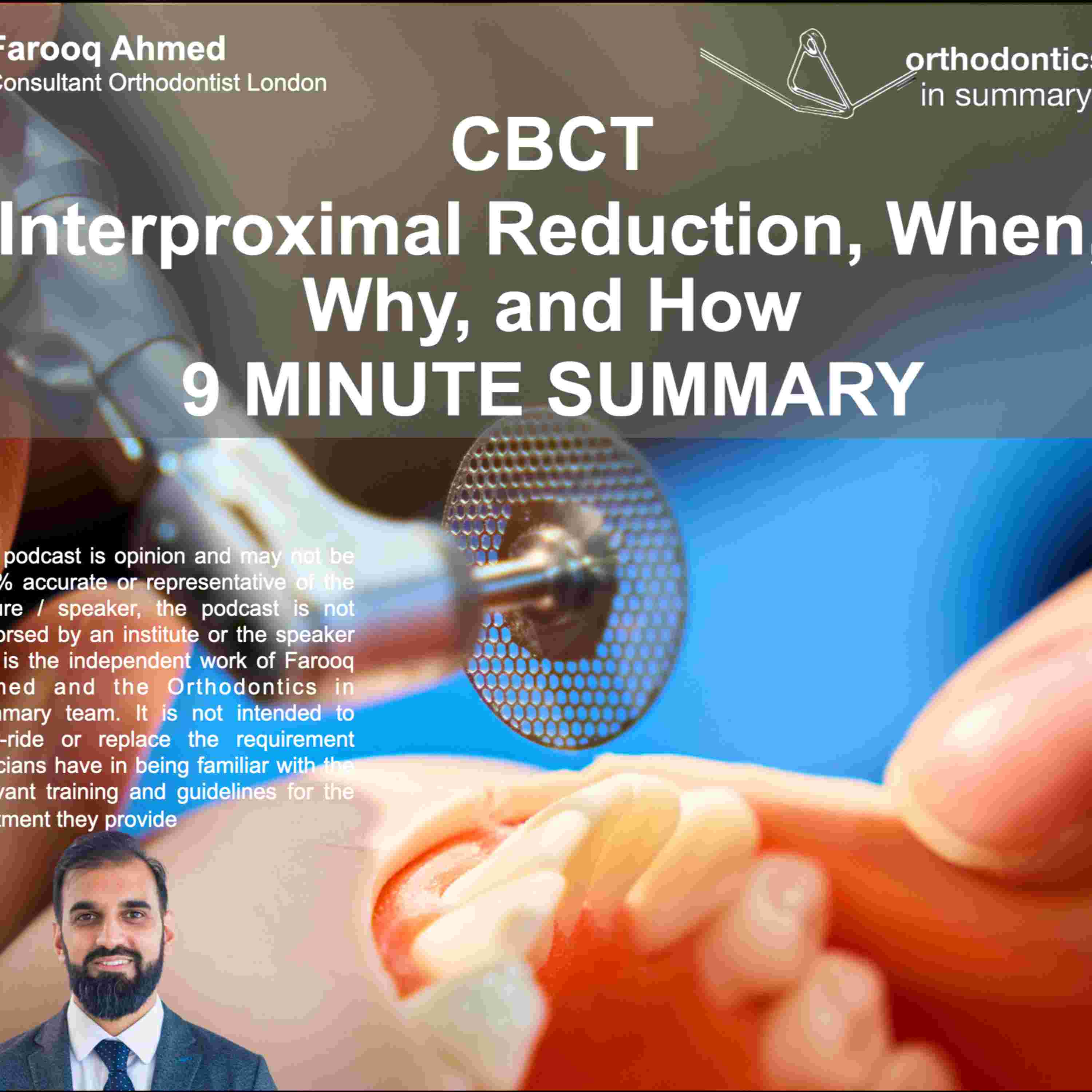

Interproximal Reduction, When, Why, and How | 9 MINUTE SUMMARY
In this episode, I dive into the fundamentals of interproximal reduction(IPR) when to use it, why it matters, and how to do it effectively.
We’ll cover how much IPR can safely be carried out, compare differentclinical protocols and their pros and cons, and take a critical look at howaligner software plans IPR (and where it may fall short).
This summary is based on Dr. Flavia Artese’s insightful lecture at therecent American Association of Orthodontists Annual Session in Philadelphia,along with insights from my own clinical research and experience.
How much IPR is possible?
Recommended amount ½ to 1/3 of outer enamel
Estimate with periapical radiographs are inaccurate, under-estimateas well as over estimate Meredith 2017 Brine 2001
Quantity of the enamel each interproximal surface Kailasam2021 systematic review, with an excellent table created by Bosio in 2022 highlightingthe enamel present and hypothetical safe reduction, ranging from 0.3-0.7mm,with 5-10% greater enamel on the distal surfaces
Can all teeth have IPR?
· Triangular teeth are ideal
o Large interradicular distance, roots canapproximate with no issue
· Square shaped teeth not ideal
o Reduced interradicular distance, rootapproximation of 0.8mm = loss of crestal bone Taera 2008
Are we accurate with IPR? Johner 2013 AJODO
· Manual strips Vs rotary disc Vs oscillatingstrips = all underperformed IPR by up to 0.1mm
Protocols:
Small Vs Large
· 0.1-0.2mm manual strips
· 0.3mm+ larger reduction
· Polishing required – If not = 25 um furrows retainplaque Jack Sheridan1989
Separation posterior region
· Separator – Requires measuring of premolarbefore and after
· Bur – needle bur
o Parallel occlusal plane
o Recontour tooth surface to create contact point
· No separator - requires contact point to be broken, advantageis the measurement of the IPR site is accurate
Bolton’s analysis
· Based on excess, rather than tooth removal
Proportionality
· Width
o Canine 90% of central incisor
o Lateral 70% of central incisor
IPR planning
Bolton’s discrepancy + Tooth proportionality
= whento add or remove tooth structure
However
· “Don't do pre-emptive stripping for balancingtooth mass ratios between arches. Chances are it will work out just fine” Jack Sheradin 2007 JCO
Method of use for 4 mm of IPR:
· Posterior to anterior – Jack Sheridan
o Posterior IPR first, followed by distalisation,e.g. 4-5 first, distalise 4
o Maintain arch length with stops etc, maintainanchorage
· Anterior to posterior – Farooq
o Anchorage preserving
o Tony Weir 2021 the most common site in clinicalpractice was the lower anterior segment
IPR on overlapping teeth
· Not possible to achieve ideal anatomy withmotorised IPR instruments
· Posterior IPR first, distalise, followed byanterior alignment and IPR – Flavia
· Use of handstrips is possible on overlappingteeth - Farooq
Limits of IPR
· 4-5mm, although Sheridan described possible 8.9mm,technically challenging
· IPR is not a possibility for sagittaldiscrepancy:
Greater Bolton’s discrepancies in class 3 and class 2malocclusions, SR 53 studies Machado 2020, greater in class 2 and 3 casesalbeit a small difference of 0.3-0.8%
Retained primary 2nd molars
· Idealise occlusion
· Consider root morphology divergence, as post IPRspace may not close
o If divergence greater than crown, reconsider asspace closure unlikely
Why do we need to use IPR with aligners? Dahhas 2024
· Alogrythm reduces the number of aligners
· More IPR rather than saggital correction
· IPR staged inappropriately with large IPR whilstcontact point overlap, which is difficult to perform adequate anatomicalreduction